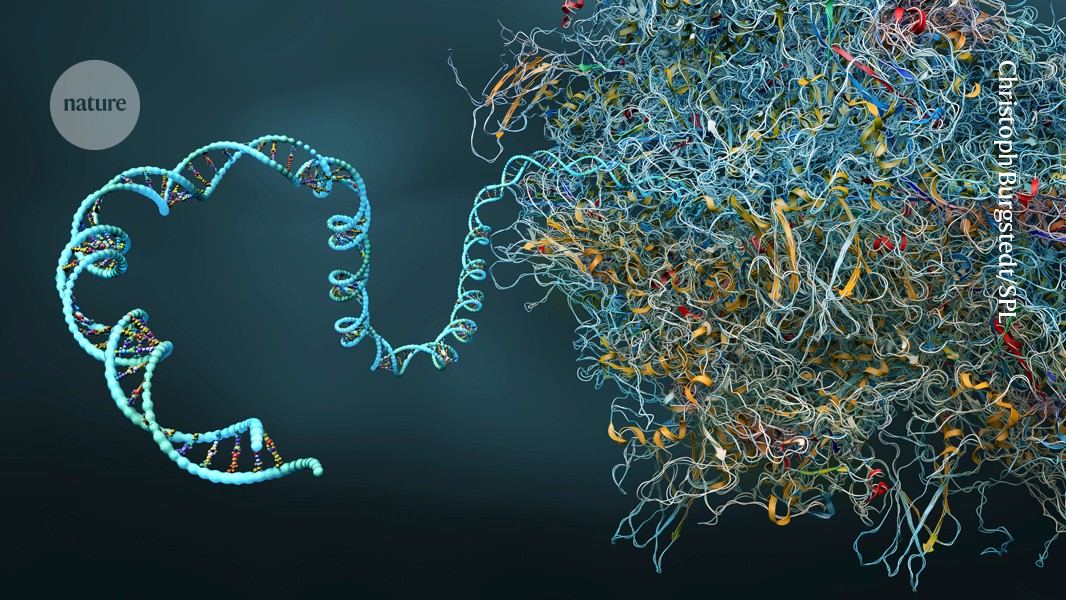
A cell’s protein-making machinery (artist’s illustration) can be instructed to ignore mutations that would otherwise result in shortened proteins. Credit: Christoph Burgstedt/Science Photo Library
A single multipurpose gene-editing tool can correct several genetic conditions by restoring proteins that have been truncated by disease-causing mutations. The method might one day overcome a key stumbling block faced by gene-editing therapies: the need to design a bespoke treatment for each disease.
The new approach, called PERT, combines gene editing with engineered RNA molecules that allow protein synthesis to continue even when a mutation in the DNA tells it to stop prematurely. Such mutations are called nonsense mutations, and they comprise nearly one-quarter of known disease-causing DNA variants.
Powerful CRISPR system inserts whole gene into human DNA
So far, PERT has overcome disease-linked nonsense mutations in mice and in human cells grown in culture, but further testing and refinement are needed before the approach can be studied in people, says David Liu, a chemical biologist at the Broad Institute in Cambridge, Massachusetts, and a co-author of a paper about the technique.
If it does prove effective in humans, PERT could drive down the cost and speed up the development of gene-editing therapies for many conditions. “Disease-agnostic approaches like this raise a possibility that, I think, would be incredibly exciting for patients,” says Liu. He and his colleagues published their results on 19 November in Nature1.
PERT proposal
Liu first dreamt up the idea for PERT a few years ago while preparing for an event called science karaoke at his laboratory’s annual retreat. During this event, each member presents an out-of-the-box idea for a project that could send the lab in a new direction. Singing is not required.
For his project, Liu suggested that the team should investigate synthetic RNA molecules called suppressor tRNAs, which allow a cell’s protein-synthesis machinery to read through a nonsense mutation in the DNA and produce a full-length protein. Suppressor tRNAs, Liu proposed, could be inserted into a genome using a technique called prime editing. At the end of his ten-minute presentation, Liu asked his lab if anyone would be interested in taking on the project; a few members volunteered.
Personalized gene editing helped one baby: can it be rolled out widely?
As the team worked to develop PERT, other researchers published promising results using suppressor tRNAs without gene editing. One group used a virus to shuttle the tRNA into cells2; another encased their tRNAs in fatty particles similar to those used in COVID-19 mRNA vaccines3.
Each of these approaches showed promise in animal models with genetic diseases. But viruses can provoke dangerous immune responses, and fatty particles required repeated doses, says Zoya Ignatova, a biochemist at the University of Hamburg in Germany.
Gene editing, by contrast, would allow researchers to insert a gene encoding the suppressor tRNA into a recipient’s genome. In theory, no further doses would be needed.




